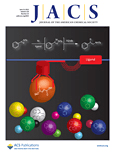
Journal of the American Chemical Society
Scope & Guideline
Shaping the Future of Chemistry Through Rigorous Research
Introduction
Aims and Scopes
- Catalysis and Reaction Mechanisms:
Research on catalytic processes, including the development of novel catalysts, mechanistic studies, and applications in organic synthesis and energy conversion. - Materials Science and Nanotechnology:
Studies focusing on the design, synthesis, and application of new materials, including nanostructures, polymers, and metal-organic frameworks for various applications. - Biochemistry and Chemical Biology:
Investigations into the chemical basis of biological processes, including enzyme mechanisms, protein interactions, and the development of therapeutics. - Sustainable and Green Chemistry:
Research aimed at developing environmentally friendly methodologies, including the utilization of renewable resources and the design of processes with reduced environmental impact. - Electrochemistry and Energy Storage:
Studies related to electrochemical processes, energy conversion, and storage systems, including batteries and fuel cells. - Computational Chemistry and Theoretical Studies:
Application of computational methods to predict chemical behavior, understand reaction mechanisms, and guide experimental design.
Trending and Emerging
- Photocatalysis and Photoredox Chemistry:
There is a significant increase in research exploring photocatalytic reactions and photoredox processes, indicating a growing interest in utilizing light for chemical transformations. - Artificial Intelligence and Machine Learning in Chemistry:
The integration of AI and machine learning techniques in chemical research is gaining momentum, with studies focusing on predictive modeling, reaction optimization, and materials discovery. - Biomimetic and Bioinspired Materials:
Research on materials and processes inspired by biological systems is trending, particularly in the development of new catalysts, drug delivery systems, and environmentally friendly materials. - Electrocatalysis for Energy Conversion:
Emerging research highlights electrocatalytic processes for energy conversion and storage, particularly in the context of CO2 reduction, hydrogen production, and battery technologies. - Dynamic Covalent Chemistry:
The use of dynamic covalent bonds for creating adaptive and responsive materials is increasingly popular, reflecting a trend towards materials that can change properties in response to external stimuli.
Declining or Waning
- Traditional Organic Synthesis:
There is a noticeable shift away from classical organic synthesis methods towards more innovative, sustainable, and automated approaches, reflecting a broader trend towards efficiency and environmental considerations. - Inorganic Chemistry without Functional Applications:
Research purely focused on traditional inorganic chemistry without clear functional applications is less frequently represented, as the journal emphasizes studies with real-world relevance and interdisciplinary connections. - Basic Photochemistry:
While photochemistry remains a significant area, the focus on basic photochemical studies without a clear application or innovative approach appears to be diminishing in favor of more applied research. - Polymer Chemistry without Sustainability Focus:
Research on polymer chemistry that does not address sustainability or recycling aspects is becoming less prominent, as the emphasis shifts towards environmentally friendly materials and processes.
Similar Journals
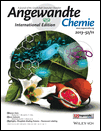
ANGEWANDTE CHEMIE-INTERNATIONAL EDITION
Advancing Chemistry Through Rigorous ResearchANGEWANDTE CHEMIE-INTERNATIONAL EDITION, published by WILEY-V C H VERLAG GMBH, stands as a leading journal in the fields of Chemistry and Catalysis, holding a prestigious position with a Q1 ranking in both categories as of 2023. With an ISSN of 1433-7851 and an E-ISSN of 1521-3773, this esteemed publication has been an invaluable resource for the global scientific community since its inception in 1962. The journal's impact is further underscored by its remarkable Scopus rankings, where it occupies the 13th place among 408 journals in General Chemistry and the 4th place among 68 in Chemical Engineering - Catalysis, marking it in the 96th and 94th percentiles, respectively. Although it does not offer Open Access, ANEWANDTE CHEMIE-INTERNATIONAL EDITION remains essential for researchers, professionals, and students seeking to stay abreast of cutting-edge developments and innovations in chemical sciences. Its comprehensive scope and rigorous peer-review process ensure that only the highest quality research finds its way to publication, contributing significantly to the advancement of chemistry worldwide.
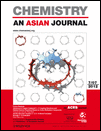
Chemistry-An Asian Journal
Highlighting the Impact of Chemistry in Asia and Beyond.Chemistry-An Asian Journal is a premier academic publication in the field of chemistry, published by WILEY-V C H VERLAG GMBH in the United Kingdom. With an impressive track record since its inception in 2006, this journal has established itself as a leading platform for high-quality research, effectively bridging the gap between fundamental and applied chemistry. The journal is currently ranked in the Q2 category for Biochemistry and Q1 in both Chemistry (miscellaneous) and Organic Chemistry as of 2023, reflecting its significant impact and relevance in the scientific community. According to Scopus metrics, it stands at a commendable rank of #92 out of 408 in General Chemistry, showcasing its influence and reach among researchers. Although not an open-access journal, it offers a wealth of subscription options, allowing access to cutting-edge research articles and reviews that cater to both seasoned professionals and new entrants to the field. By publishing innovative findings and fostering discussions on contemporary issues in chemistry, Chemistry-An Asian Journal remains a vital resource for advancing knowledge and facilitating collaboration among scientists globally.
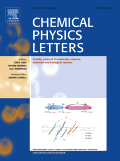
CHEMICAL PHYSICS LETTERS
Unveiling Breakthroughs in Physical Chemistry ResearchCHEMICAL PHYSICS LETTERS, published by Elsevier, is a prestigious journal that has been at the forefront of advancing knowledge in the fields of physical and theoretical chemistry and physics since its inception in 1967. With an impressive impact factor reflective of its high-quality research output, this journal holds Q2 quartile rankings in both the Physical and Theoretical Chemistry and Physics and Astronomy categories for 2023. It is recognized as a key platform for disseminating groundbreaking findings, with Scopus rankings placing it within the top 76th and 66th percentiles in its respective categories. Researchers and professionals benefit from its insightful contributions and rigorous peer-review process, making it an essential resource for those engaged in cutting-edge chemical physics studies. Although the journal is not open access, it remains accessible through various institutional subscriptions, ensuring that a wide audience can explore its wealth of knowledge. Located in Amsterdam, Netherlands, the journal continues to drive innovation and collaboration across diverse scientific disciplines.
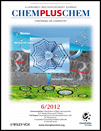
ChemPlusChem
Fostering Scientific Dialogue for a Brighter Chemical FutureChemPlusChem is a premier journal published by WILEY-V C H VERLAG GMBH, dedicated to the vibrant field of chemistry. With an ISSN of 2192-6506 and an impressive Q1 ranking in Scopus's 2023 category for miscellaneous chemistry, this journal serves as a significant platform for the dissemination of high-quality research and innovative findings. Since its inception in 2012, ChemPlusChem has fostered interdisciplinary collaborations, encapsulating a wide array of topics within chemistry that facilitate scientific advancement and education. The journal features a robust open access system, enabling extensive visibility for authors while providing easy-to-access resources for researchers, professionals, and students globally. Located in Weinheim, Germany, ChemPlusChem reflects international standards and ambitions, striving to enrich the global scientific community through rigorous research and engaging scientific discourse.
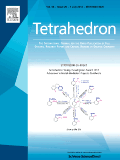
TETRAHEDRON
Elevating scientific dialogue with rigorous peer-reviewed research.TETRAHEDRON, published by Pergamon-Elsevier Science Ltd, is a leading peer-reviewed journal that has been pivotal in advancing the fields of Biochemistry, Drug Discovery, and Organic Chemistry since its inception in 1957. With an ISSN of 0040-4020 and an E-ISSN of 1464-5416, this journal provides a platform for the dissemination of cutting-edge research and innovative methodologies that contribute significantly to the scientific community. Recognized for its rigorous editorial standards, TETRAHEDRON has been categorized in the Q3 quartile for 2023 across its relevant fields, reflecting its solid impact within the scientific sphere. Despite the current absence of Open Access options, the journal continues to engage a diverse readership, offering invaluable insights and advancements that fuel both academic and industrial applications. With an ongoing commitment to excellence, TETRAHEDRON remains an essential resource for researchers, professionals, and students aiming to stay at the forefront of chemistry and biochemistry research.

JACS Au
Fostering collaboration through transformative scientific dialogue.JACS Au, published by the American Chemical Society, is a premier open access journal dedicated to advancing research in the rapidly evolving fields of analytical chemistry, organic chemistry, and theoretical chemistry. Since its inception in 2021, JACS Au has quickly established itself as a leading platform for high-quality research, reflected in its Q1 rankings across multiple categories for 2023, including Organic Chemistry and Analytical Chemistry. The journal focuses on innovative methodologies and applications that drive the discipline forward, making it an essential resource for researchers, professionals, and students alike. With an impressive Scopus ranking, consistently placing in the top tiers of its categories, and offering a broad range of access options for its readership, JACS Au aims to foster collaboration and disseminate transformative ideas that impact the global scientific community. Exploring diverse topics within chemistry, this journal provides a vital conduit for sharing groundbreaking research and enhancing scientific dialogue.
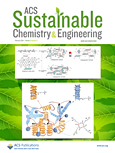
ACS Sustainable Chemistry & Engineering
Pioneering research for a greener tomorrow.ACS Sustainable Chemistry & Engineering is a premier journal published by the American Chemical Society, dedicated to advancing knowledge and innovation in the fields of sustainable chemistry and engineering. With an impressive impact factor and a consistent ranking in the Q1 category across various disciplines such as Chemical Engineering, Chemistry, Environmental Chemistry, and Renewable Energy, this journal serves as a vital resource for researchers, professionals, and students alike. Since its inception in 2013, the journal has been committed to publishing high-quality, peer-reviewed articles that address the critical challenges of sustainability in chemistry and engineering. With no open-access option currently available, the journal emphasizes the importance of premium scholarly communication. As the field continues to evolve, ACS Sustainable Chemistry & Engineering remains at the forefront of providing cutting-edge research that impacts our understanding and application of sustainable practices in the chemical sciences.

ACS Organic & Inorganic Au
Connecting Researchers for a Sustainable Future in ChemistryACS Organic & Inorganic Au, published by the American Chemical Society, stands as a premier open-access journal dedicated to advancing the fields of organic and inorganic chemistry. Since its inception in 2021, this journal has swiftly risen to prominence, achieving a commendable Q1 classification in Inorganic Chemistry, Organic Chemistry, and Physical and Theoretical Chemistry as of 2023. With an ISSN of 2694-247X, it provides a vital platform for researchers, professionals, and students to disseminate their findings and engage with cutting-edge work across converged disciplines. Operating from its headquarters in Washington, DC, ACS Organic & Inorganic Au is committed to fostering a collaborative research environment, encouraging rigorous peer review, and ensuring the wide accessibility of high-quality scholarly articles. With its open-access model, readers worldwide can freely access and utilize research findings, promoting a global exchange of knowledge crucial for driving innovation in chemistry.
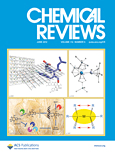
CHEMICAL REVIEWS
Charting the Course for Future Chemical Discoveries.Chemical Reviews, published by the American Chemical Society, is a leading journal in the field of chemistry, renowned for its comprehensive and authoritative reviews on a wide range of chemical topics. With its ISSN 0009-2665 and E-ISSN 1520-6890, this prestigious journal has maintained a remarkable trajectory since its inception in 1924, continuously contributing to advancements in the chemical sciences. As a Q1 journal in the Chemistry (miscellaneous) category, it stands at the forefront of research, boasting an impressive Scopus rank of #1 out of 408 in the field of General Chemistry, positioning it within the top 1% of the field. Chemical Reviews offers invaluable insights and serves as a critical resource for researchers, professionals, and students alike, facilitating knowledge exchange and fostering innovation in chemistry. While currently not open access, it remains a vital component of the scientific community, gathering an extensive readership base eager for the latest developments, methodologies, and theoretical frameworks in this dynamic discipline.
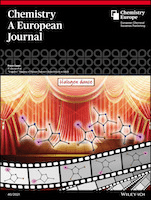
CHEMISTRY-A EUROPEAN JOURNAL
Leading the Charge in European Chemical ScienceCHEMISTRY-A EUROPEAN JOURNAL is a premier academic journal published by WILEY-V C H VERLAG GMBH, specializing in the diverse fields of chemistry and catalysis, with a distinguished focus on organic chemistry. Since its inception in 1995, the journal has established itself as an authoritative resource for researchers and professionals, currently classified in Q1 in Chemistry (miscellaneous) and Organic Chemistry, reflecting its high-quality contributions to the scientific community. With an impressive impact factor and robust Scopus rankings—#33 in Organic Chemistry and #26 in Catalysis—this journal serves as a vital platform for disseminating innovative research findings and critical advancements in chemical sciences. Although not an open-access journal, it provides valuable access options for institutions, ensuring wide reach and engagement within the scientific community. As it converges into 2024, CHEMISTRY-A EUROPEAN JOURNAL remains a key resource for anyone dedicated to advancing the frontiers of chemistry research.